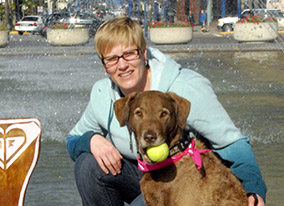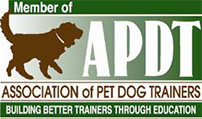I was thinking recently about the role feeling safe plays in good training. How I want my dog to feel that no matter what choice they make, the worst thing that will happen is loss of reward. But what really is safety? What does that mean? According to Merriam-Webster’s dictionary, safety is defined as:
“freedom from harm or danger : the state of being safe
: the state of not being dangerous or harmful
: a place that is free from harm or danger : a safe place”
When I am working with an dog, in a nut shell, I don’t want the animal afraid of me, afraid of the environment or afraid to make choices. Does this mean that I have to reward every single choice the animal makes, no it does not. However, it means that as I provide the consequence for what the animal did, either rewarding the behavior, or withholding the reward, the animal in no way is worried that it will not be safe. There is no sense of impending danger, they are not worried they will be harmed and I loved the “freedom”in the definition above. Freedom from harm, that to me means the animal knows I wouldn’t harm it or let anything harm it; they are safe to make choices.
I read an interesting article titled “Creating Emotional Safety in the Classroom”, by Bruce D. Perry, M.D., Ph.D. He talks about what emotional safety means in the context of a child learning. “Optimal learning is a driven by curiosity, which leads to exploration, discovery, practice, and mastery. In turn, mastery leads to pleasure, satisfaction, and confidence to once again explore. The more a child experiences this cycle of wonder, the more she can create a lifelong excitement and love of learning. The cycle of wonder, however, can be stopped by fear.”
Imagine a lifelong excitement and love of learning! The freedom and safety to explore possibilities discover new things, practice and gain mastery of skills without fear. Ah, but fear can stop this cycle.
Interestingly, Dr. Perry continues, “Under threat of any kind — hunger, thirst, pain, shame, confusion, or too much, too new or too fast — we respond in ways to keep us safe. Our minds will focus only on the information that is, at that moment, important for survival. Fear kills curiosity and inhibits exploration.”
But what is fear? How can each trainer, whether of dogs or people, decide if their student is fearful? Dr. Perry continues, “A sense of safety comes from consistent, attentive, nurturing, and sensitive attention to each child’s needs. Safety is created by predictability, and predictability is created by consistent behaviors.”
Just like we have to ask the animal we are training; dog, human, horse or chicken, is this reinforcing for you? Is the reinforcement I am giving you enough? We also have to ask that animal, do you feel safe? Do you feel free from harm? Each animal is so different, the answers will be different and our response has to match what that animal needs to feel safe to learn.
Predictability was key to a child feeling safe and I believe it also holds true with the dogs we train. If we have very predictable ways of handling reinforcement and also loss of reinforcement, our animal can feel safe when trying something that does not lead to reward. That is all that will happen, no reward.
For me and my dogs, I want them feeling safe while learning, curious, exploring their options, and safe in our practice and mastery of skills. I strive to be predictable in my training, so that loss of reward is not stressful to them, they know they are free to try another behavior and head back toward reinforcement.
Feeling safe is a gift we can give our dogs in training.
Navigation
Margaret Simek, Dog Trainer & Dog Sports Specialist



No comments yet.